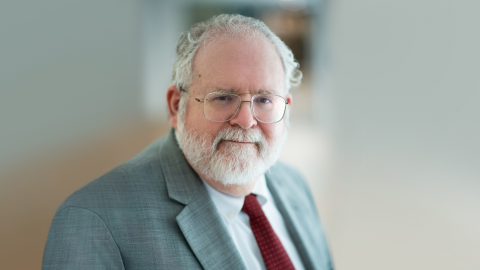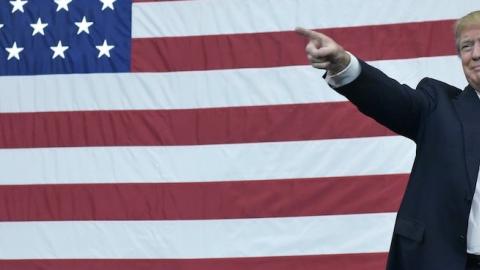President-elect Trump’s allies like to compare him to Ronald Reagan, a political outsider who overcame elite disdain and hostility to make a lasting mark on American history. Trump detractors note that Reagan was both an experienced governor (serving two terms as governor of California) and had spent many years thinking through the basic political ideas which guided his Presidency. Trump, say his detractors, lacks Reagan’s experience and his intellectual focus.
We’ll have to see how all this works out in the real world. But Trump does have something in common with both Eisenhower and Reagan, the two most successful Republican presidents since World War Two: the opportunity to preside over a Great Wave of suburbanization and give another generation the opportunity to unlock the modern version of the American Dream.
One of the deeper but often overlooked divisions between the two parties comes down to infrastructure and urban planning. Democrats, whose base tends to be urban, want government policy to favor the city center over surburbia and sprawl. Republicans, whose base tends to be suburban and rural, are the Car Party, and want government policy to favor the burbs over the city cores. Eisenhower built the interstate highway system; Obama tried and failed to start a national system of high speed rail, even as California Governor Jerry Brown made the construction of a high speed rail system linking San Francisco and Los Angeles the centerpiece of his administration’s infrastructure policy. High speed rail connects city center to city center; highways promote sprawl.
Democrats and many cultural and political lefties make strong arguments about the virtues of transit and the evils of the car-based society. Environmentally, they argue that cities are more efficient and that sprawl spoils natural beauty and contributes to both conventional and carbon pollution. From a social policy point of view, many Democratic thinkers argue that pro-urban policy is better for minorities, immigrants and the poor, while pro-surbuban policies favor more affluent whites. Additionally, many argue that suburban living breaks up natural human communities, creating an alienated society of atomized individuals. The Communist folk singer Pete Seeger used to denounce the “houses made of ticky tacky” in the burbs as well as the “ticky tacky” people who lived in them. Madeleine L’Engle’s classic A Wrinkle in Time offered a dystopian picture of suburban conformity as the domain of the Black Thing out to destroy the universe.
Republicans tend to be more pro-car and pro-burb. If people want to escape the high costs, high taxes and small apartments of urban living, why shouldn’t they, Republicans reason. Many Republicans emphasize that home ownership is the modern day version of the American Dream. The 19th century pioneers carved millions of single family farms out of the wilderness; in the twentieth century they built single family homes in the suburbs. Home ownership makes people into better citizens and smarter voters, Republicans argue. Home owners understand the trade off between government services and property taxes in ways that renters never do. They accumulate wealth through the forced savings of paying a mortgage and from the appreciation of their property. Home owners feel they have a stake in the system, and the availability of cheap starter homes with a spot of green lawn enables young people to start families. And where Democrats see ugly sprawl, Republicans see mile after mile of small businesses and franchises that create jobs and wealth.
The car-fueled expansion of the suburbs was the most important economic development in twentieth century American life. It began in the 1920s, but went on hold during the Depression and World War Two. After the war, however, the rise of suburban developments like Levittown and the construction of the highways and the other infrastructure (water, sewer, power, schools) necessary to support them helped drive the massive expansion of the American economy, creating millions of jobs. The mortgage finance system (allowing Americans to make a small downpayment and pay off their home loans over 30 years at low, fixed interest rates) helped turbocharge the rise of American capital markets. Home equity soon became the largest asset in the average American portfolio.
While many Democrats supported the rise of suburbia, on the whole the suburbs tended to favor Republicans during much of the post-World War Two era. The shift to suburban living helped break up the old ethnically based, mostly Democratic political machines that dominated many cities and states in the Roosevelt years, and helped create a new style of politics and voting behavior.
American suburbanization came in two waves. The first wave, beginning in the late 1940s and continuing into the 1960s, helped create and define the post-World War Two age of American optimism. Life was getting visibly better for people who had been born into tenements and now owned homes with lawns and trees. But the energy and inflation crises of the 1970s derailed that first era of suburban expansion. Homes were becoming unaffordable when mortgage interest rates went into double digits, and the combination of high gas prices and recurring gas shortages, plus the high cost of heating and cooling single family homes, hit suburban Americans hard. It seemed in the late 1970s that the glory days had come to an end. Jimmy Carter advised Americans to wear sweaters and turn down their thermostats; a wave of urbanists hailed dense city living and mass transit as the new future of a post-exceptional America in which the old American Dream was out of reach.
That all changed under Reagan. Inflation fell, energy prices fell, and the Baby Boom generation, as leftist and disillusioned in the 1970s as Millennials are today, moved en masse to the burbs, started families, and grew more stable and conservative in their habits as they watched their equity grow. The second wave suburbs were different from the first. They were farther out from the city centers, and in some ways less connected to them. Malls replaced downtowns. Many new businesses took root in the outer suburbs, or “exurbs” as they were often known. In the first suburban wave, most commuters went into and out of the old city centers. In the second wave suburbs commuting and work patterns were more complex.
The second suburban wave was also more diverse than the first. Much of the first suburban wave occurred before the Civil Rights laws put an end to legal discrimination. Government institutions like Fannie Mae focused on whites; blacks were sometimes formally and more often informally kept out of the suburban boom. This was the era when many American inner cities became black majority or black plurality areas; the migration of both people and jobs out of the cities left black America isolated from the main sources of wealth in a changing economy.
The second wave came in the Civil Rights era, and suburban America became more diverse. Today’s Northern Virginia sprawl is home to hundreds of thousands of immigrants, where the opportunities to accumulate home equity and to start small businesses have opened a way to achieve the American Dream. Prince Georges County in Maryland saw the rise of black suburbia. Second wave suburbanization was less about white flight than the first wave; in the second wave we have seen mass flight from high cost cities by people of all colors who don’t have the ability to earn the kinds of incomes that let you live well in Manhattan or San Francisco. Very wealthy people and the upper upper middle class have headed back to the cities; middle class people of all colors and persuasions have to find somewhere else to live.
The financial crisis of 2007-8, brought on in large part by the housing bubble of the preceding decade, brought an end to the second suburban wave. The poor economic conditions of the recovery phase from the crisis, and the surge of Millennials into the workforce, put home ownership out of the reach of many young people once again. As in the 1970s, we heard from the usual suspects that the American Dream was over, that the future belonged to the Transit party, and that Americans needed to lower their expectations and embrace the joys of small apartments, high taxes and public transportation.
What President-elect Trump has the opportunity to do now is to launch a third great wave of suburbanization, one that can revive the American Dream for the Millennial generation, produce jobs and wealth that can power the American economy, and take advantage of changing technology to create a new wave of optimism and dynamism in American life.
There’s a confluence of trends that make this possible. In the first place, the Millennials, like the Boomers, are a large generation that needs both jobs and affordable homes. Second, the shale revolution means that energy in the United States will likely be relatively abundant and cheap for the foreseeable future. Third, both financial markets and the real economy have recovered from the shock of the financial crisis, and, whatever hiccups and upsets may come their way, are now ready for sustained expansion. Fourth, revolutions in technology (self-driving cars and the internet) make it possible for people to build a third ring of suburbs even farther out from the central cities, where land prices are still low and houses can be affordably built.
For national politicians, this is a huge opportunity. Creating the infrastructure for the third suburban wave—new highways, ring roads and the rest of it for another suburban expansion—will create enormous numbers of jobs. The opportunity for cheap housing in leafy places will allow millions of young people to get a piece of the American Dream. Funding the construction of this infrastructure and these homes gives Wall Street an opportunity to make a lot of money in ways that don’t drive the rest of the country crazy.
This approach meshes very well both with the President-elect’s economic instincts and with the economic interests of the people who voted for him. It also works for the Republican dominated states around the country. It capitalizes on one of America’s distinctive advantages: less densely-populated than other advanced countries, the United States has the elbow room for a new suburban wave.
This is not a slam dunk. There are significant problems standing in the way of a new suburban wave, and it will take some hard work by good wonks to put the policy pieces together at the federal, state and local levels. But the opportunity is real, and if the Trump Administration succeeds in putting the elements in place for another Great Wave of suburbanization, President Trump could stand with Eisenhower and Reagan among the great Republican success stories of the last 100 years.
















